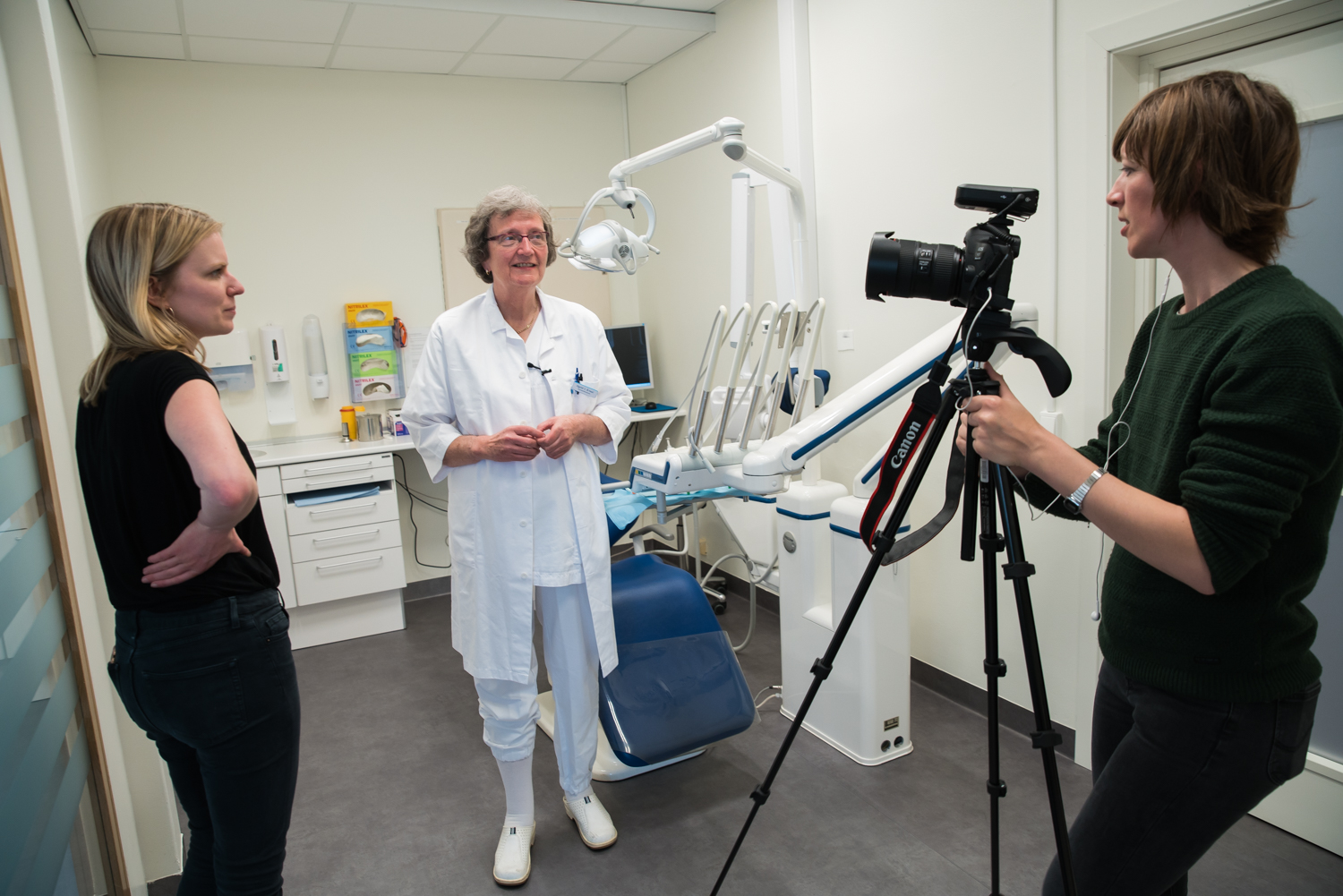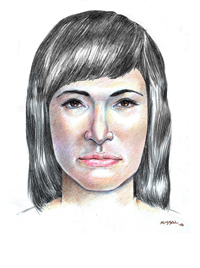During the past year, journalists from major international media have visited the Faculty of Dentistry in Oslo for a very specific purpose: they wanted to know about a mysterious death in 1970. They all asked the same questions: Who was the woman found in the Ice Valley? Why and how did she die?

Sigrid I. Kvaal has had a lot of practice in talking to journalists during the last year. In April she was visited by a team from the BBC, and after a long talk in her office, they prepared for a video interview in one of the clinics at the Faculty. Photo: Ingar Storfjell, OD/UiO.
A Tuesday afternoon in April, when students and staff have gone for the day: The buildings are deserted, waiting for another day, except in one place. In the office of Associate Professor Sigrid I. Kvaal there is plenty of activity and excitement.
- I can say that this dental work was not done in Norway, explains Sigrid in perfect English to two young journalists, bubbling with excitement as they put their questions. She points to some older pictures of a set of teeth with a number of gold bridges. One of the journalists asks whether the work could have been done in the UK. - No, not in England either. Most likely it was done somewhere in Eastern Europe, the Associate Professor says.
The set of teeth belonged to the woman from the Ice Valley (Isdalen), who is becoming quite well known. The visitors in Ingrid's office are from the British national broadcaster, the BBC. The two journalists, who were not even born when the mysterious owner of the teeth drew her last breath, have travelled to Norway to record a video interview with Sigrid, among other things, even though colleagues from the BBC had already interviewed her for the radio earlier in the year. Both the German magazine Die Zeit and the Norwegian TV channel NRK paid her a visit the past year.
What is this special knowledge that brings journalists almost flocking to the Faculty of Dentistry in Oslo?
The case of the woman from the Ice Valley

We have to go back some decades in time. Most people who have grown up in Norway and were old enough to watch the TV news in 1970 can remember the mystery of the Ice Valley woman. A charred body was found in the valley Isdalen (Ice valley) near Bergen in November that year. The police were uncertain whether it was a case of murder or a suicide but decided just before Christmas that it was a suicide. Nevertheless, many of the circumstances surrounding the woman give rise to questions about the police conclusion, about why she was in Norway and what she was doing in western Norway.
After the body was found investigations revealed some striking details indicating that the woman had travelled extensively under a number of different names, using different passports. She had unusual habits and unusual things in her luggage. Since the police never established the woman's real identity, the police - motivated by journalists - have now turned to researchers and scientific methods for help with the case and other details such as how old the woman was.
The media reopens a cold case
Recent investigations of the remains of the body has revealed more than the woman's age, disclosed in BBCs podkast "Death in Ice Valley".
- Many surprising details came to light almost immediately after the dead woman was discovered. Her suitcases were found, revealing the many different identities she had used. Police discovered that she was not Norwegian, and could estimate an approximate age. So they found out a lot about her in 1970, knowledge we can continue to build on today, says Sigrid.
Most of the reasonable theories about who the woman was and what she was doing in Norway were examined when NRK 're-opened' the case in 2016, and equally thoroughly reviewed in the BBC podcast made this year, in English, and targeting an international audience. The ten episodes were released together with a dedicated forum for discussion on Facebook, with a group that now has about 16,000 members. The group is highly active: every day participants from all around the world initiate new discussions and speculations.
The German media have also shown strong interest in the case. The weekly magazine Die Zeit published a long article in its 11th January issue, with a follow-up some months later.The TV-channel Südwestrundfunk (SWR) has made their own programmes about the mystery.






